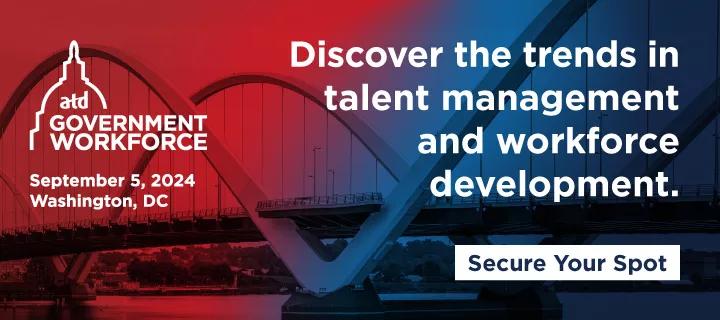ATD Blog
Aligning Your Federal Learning Ecosystem to the TLA Standards
Wed Aug 21 2024

As many in the federal learning community are aware, the Advanced Distributed Learning (ADL) Initiative has developed a set of standards known as the Total Learning Architecture (TLA). The TLA is a strategy for enabling enterprise level learning ecosystems and managing user learning data within federal agencies. The TLA consists of four learning data standards which enable alignment between the individual systems that an agency may implement and support the free flow of data between those systems. These standards provide a framework for agencies to reference when considering their own learning technology ecosystem.
At first glance, the standards may appear intimidating for those planning to implement new learning platforms or ensuring existing learning ecosystems are aligned. In this blog post, we’ll summarize each of the TLA standards and highlight important considerations in light of these data strategy pillars when implementing and managing SaaS LMS platforms within your overall learning ecosystem.
Experience API (xAPI) 2.0
The Experience API (xAPI) Standard requires that your systems use application programming interfaces (APIs) to track learning activity. Start with an industry-standard SaaS LMS that uses and makes APIs accessible. This is the modern engine for sending and receiving data to and from other programs. Also, make sure you have resources who can map and leverage those APIs to meet your agency’s requirements and infrastructure to support the constant interface of information between your LMS and other systems. Finally, have a clear purpose for how your agency is going to use APIs. Think beyond simply checking the box. Consider the benefits your agency is seeking and how you’ll unlock new capabilities and efficiencies by introducing them.
Standard for Learning Metadata
The Standard for Learning Metadata dictates that organizations must define their learning data, such as courses, completions, or other descriptors. To do this, you will need to understand the learning objects you have now and how your agency plans to use them in the future. It’s important to establish guardrails for what “counts” as training and should be included in your LMS, and what doesn’t. This helps keep your learning data clean and useful. Gather requirements and use cases from your learning program owners, administrators, and governance team, including additional data points that might need to be created. Ensure these are well-documented for later reference.
Sharable Competency Definitions (SCD)
With the Sharable Competency Definitions (SCD) Standard, the goal is to define a common language across your organization for how learners will be evaluated and why training data matters. Get input from your legal and human resources offices, since changes to performance benchmarks can significantly impact employees. Ideally, you should tie competencies to your organization’s strategic plan, allowing everyone to point to a clear definition for your entire agency of what “good performance” looks like, and why each training item in the catalog matters.
Standard for Enterprise Learning Records
Under the Standard for Enterprise Learning Records, agencies must choose a single source of truth, or learning record store (LRS), where all learning records will be stored. For many organizations, their industry-standard LMS is that system, and data from other systems is fed in to fill out the records, but this will depend on the data you’re tracking and how you need to use it. In some cases, the best fit may be a separate database altogether that draws data from the LMS and other platforms. What other systems make up your learning ecosystem? How should data flow from one system to another? Consolidating systems or streamlining processes often greatly clarifies where your LRS should reside in your learning ecosystem.
Imagine all your disparate systems working in harmony. Learner information is flowing from one system to another exactly as you need it to, seamlessly. What would it look like for your technology to be aligned with your learning strategy? The TLA standards are simply recommended steps to get there. By leveraging APIs, in an integrated talent management ecosystem that has clear definitions for learning metadata and expectations for measuring performance, with a single authoritative source for all a user’s learning data, what you are imagining is possible. It is possible to achieve it technically, and it is also possible for you to implement it practically.


